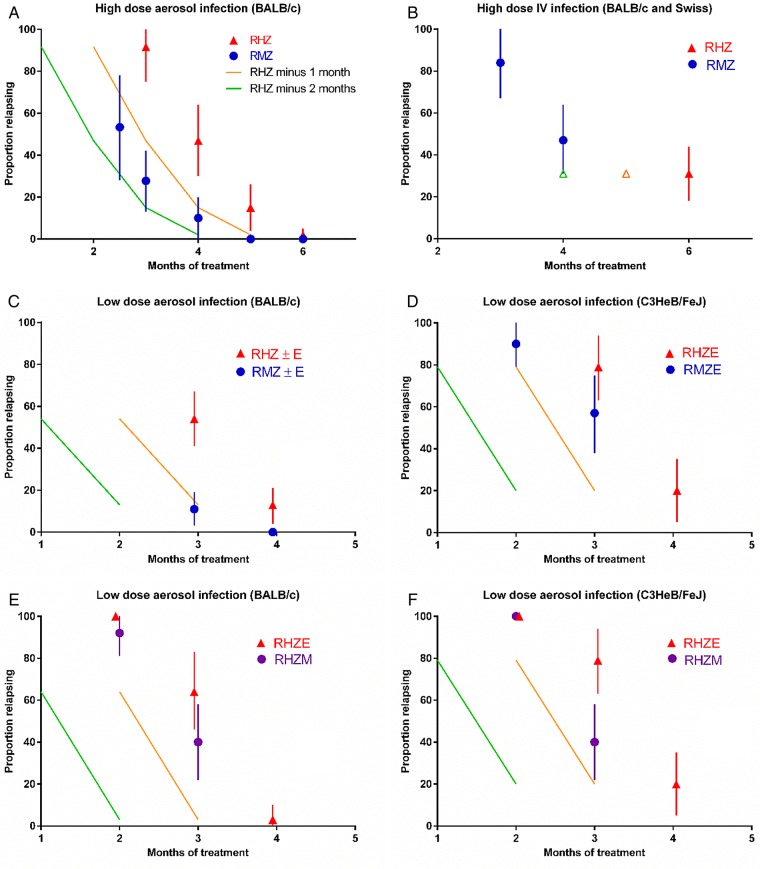Figure 2.
Shortening effects of moxifloxacin-containing regimens. See Figure 1 for explanation of the schematic. A, high-dose aerosol infection model in BALB/c mice, where substitution of M for H conferred a treatment-shortening effect that falls between 1 and 2 months (4 experiments) [21, 31–33]; (B) high-dose intravenous infection model in Swiss and BALB/c mice, where substitution of M for H conferred a treatment-shortening effect of <2 months (2 experiments) [31, 34]; (C) low-dose aerosol infection model in BALB/c mice, where substitution of M for H conferred a treatment-shortening effect of 1 month (3 experiments) [31, 35]; (D) low-dose aerosol infection model in C3HeB/FeJ mice, where substitution of M for H conferred a treatment-shortening effect of <1 month (2 experiments) [35]; (E) low-dose aerosol infection model in BALB/c mice, where substitution of M for E conferred a treatment-shortening effect of <1 month (2 experiments) [31, 35]; (F) low-dose aerosol infection model in C3HeB/FeJ mice, where substitution of M for E conferred a treatment-shortening effect of <1 month (2 experiments) [31, 35].

